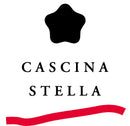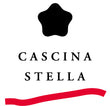BEEF CUTS

Front Neck - Brutto e Buono
It is a cut with a high percentage of connective tissue marbled by small portions of fat and full of muscles, flaky and very tasty.
COOKING METHODS AND TIMES :
Stews 1.30 hr/Kg over a low flame
roasted and boiling 1.30 hr/Kg
braising 2.00 hr/Kg
Excellent ground for fillings or as a base for the preparation of meatballs and ragout.

Rear Neck
It is a cut with a high percentage of connective tissue marbled by small portions of fat and full of muscles, flaky and very tasty. Very typical of the Piemontese breed is their characteristically large nape of the neck: in Italian called “il tenerone”.
COOKING METHODS AND TIME
A cut suitable for pot roasting: recommended cooking time 1.30 hr/Kg on a low heat. Also suitable for boiling, stewing, braising and ground.

Topside – Round of Shoulder
Part derived from the anterior muscles of the shoulder in contact with the shoulder blade. Shape and flavor can be compared to the silverside or topside thigh.
COOKING METHODS AND TIMES:
Ideal for roast beef 40 min./kg or for vitello tonnato, boiling 40 min./Kg
Ideal for breaded cutlets, roasts and braising.

Priest's hat - Shoulder Clod
Carved from a central muscle of the shoulder connected with the shoulder blade, it is crossed by a vein of connective tissue, hence the name “ veined roast”, which makes the meat very tender and gelatinous.
COOKING METHODS AND TIME:
A classic cut for roasting: 1.30 hr/Kg Also suitable for boiling and stewing.

Shoulder - Chuck
It is the muscle that connects the priest's hat and shoulder muscle; a prime cut with characteristics similar to the cuts of the thigh.
COOKING METHODS AND TIME:
Ideal for cooking braised: 1.30 h\Kg.

Shoulder Muscle
The anterior muscle consists of flexor and extensor muscles of the phalanges, it wraps around the radius and ulna. It has a considerable amount of connective tissue.
COOKING METHODS AND TIME:
A tasty cut, excellent for boiling without the bone: 1.30/Kg.

Brisket
Made up of muscles interspersed with veins of fat in the upper part of the breast that make it both partially tender and partially dry. Perfect for large boiled meats. The base of the bones are the first seven sternum vertebrae.
COOKING METHODS AND TIME:
Excellent for boiling on the bone: 2 hr/kg

Royal Rib - Rib Eye
It includes the lateral muscles of the breast. It is a cut composed of fatty meat and bones. The part closest to the bone is very flavorful. The meat, although sometimes slightly fibrous, lends itself to the preparation of dishes of boiled beef and ground beef. This cut is split between the front and rear portions, in fact, starting from the 5th or 6th thoracic vertebra it comes down to the tip of the breast, thus dividing the animal into quarters..
COOKING METHODS AND TIME:
A cut suitable for boiling on or off the bone: 2 hr/Kg Also suitable for the preparation of broth..

Belly - Short Plate
COOKING METHODS AND TIME:
A cut suitable for boiling on or off the bone: 2 hr/Kg or minced for sauce. Particularly suitable for cooked ground beef and stews.

Rib
It is the muscle that covers the top of the last ribs and vertebrae of the back, from the 5th - 6th to the 13th dorsal. The cut is divided into uncovered ribs and covered ribs (above the neck there is a fascia that is called a cover). Note that the ribs are counted starting from the bottom. The last rib, the 13th, is considered the best. This enables us to recognize that the first four ribs are the most tasty having fat and muscle from the “tenerone” cut.
COOKING METHODS AND TIME:
Excellent on the bone (tagliata): 40 min./Kg over a very low heat or briefly seared. Also ideal for broiling and grilling. If the cut comes from the anterior part of the loin, starting from the animal’s neck, from the first to the fifth dorsal vertebra, leaving the rib bone attached, you get the characteristic TOMAHAWK, excellent for broiling or grilling.

Roast Beef - Sirloin
It is the final part (towards the tail) of the long back muscle located above the fillets on both sides of the back, between the last rib and the top of the rump. It does not require long cooking. It is a very tender cut, one of the most sought after and expensive.
COOKING METHODS AND TIME:
Ideal for roast beef, 45 min./Kg, or for sliced tagliata steak off the bone: 40 min./Kg over a very low heat or briefly seared. If cut with the bone and fillet, it is a typical T-Bone steak, excellent cut for a succulent Fiorentine broiled or grilled.

Fillet
It is a very tender muscle mass, rarely used by the animal. It has a long and pyramidal shape. It is the most sought after and expensive cut. The fillet is the best cut, but not the most flavorful due to low muscle motility and the absence of infiltration of fat.
COOKING METHODS AND TIME:
A tender cut both lean and tasty. Excellent cooked in slices, over a low heat or briefly seared, or prepared like roast beef: 30 min./Kg Also suitable for broiling or grilling, for a Beef Tagliata, roasts, Bourguignonne and Beef Medallions.

Sirloin - Rump
This includes the muscles of the dorsal-lumbar region, which are found right after the sirloin and before the hip. Externally only a part of it is visible, then it is found inside the acetabular fossa and is next to the nut and silverside.
COOKING METHODS AND TIME::
A cut which is ideal sliced and cooked in butter or steamed: slowly over a low heat. It is also a suitable substitution for fine cuts of meat usually used for roasts or steaks. Tasty broiled or grilled.

This internal muscle of the belly does not have layers of fat.
COOKING METHODS AND TIME:
Ideal for stuffing a pocket or used for a meat roll: 1.30 hr/Kg Suitable for making a Genovese Cima where a soft filling is added.

Belly - Short Ribs
Includes the abdominal muscles at the end of the sternum, which do the job of extenders, up to the thigh. It is a meat characterized by layers of muscle and little fat.
COOKING METHODS AND TIME:
Especially suitable for mincing to use in cooking.

Thick Flank
It is a muscle that is not seen from the outside. It contains the femur bone, including the core muscles of the thigh. It is a very tender and tasty cut of meat, being a muscle that works a lot.
COOKING METHODS AND TIME:
An excellent cut to use sliced and cooked in butter, scaloppine, braised or minced for eating raw.Ideal for a tagliata broiled or grilled.

External Round
It is a muscle that covers most of the outer portion of the thigh. This is a massive part which also includes the internal muscles of the upper part of the thigh; the final part is in contact with the femoral bone. The meat is a bit fibrous and very flavorful.
COOKING METHODS AND TIME:
Ideal for breading, or minced for eating raw. Suitable for grilled steaks and scaloppine.

Topside - Topround Inside
A tasty and tender cut of meat, situated internally, it is very voluminous and includes the inner thigh muscles and the femur bone.
COOKING METHODS AND TIME:
Excellent for breading, scaloppine, small meat rolls, Roast Beef and is often hand-chopped with a knife and served raw, known as Battuta al Coltello.

Round - Eye of Round
It is a round and long muscle found at the base of the thigh. It is a very lean cut of meat
COOKING METHODS AND TIME:
Ideal for slicing and eating raw (Carne Cruda all’Albese), for Battuta al Coltello or for vitello tonnato, boiling 40 min./Kg

Sirloin Tip Roast
Posterior tibial muscle, flexor or extensor of the phalanges. It has a substantial amount of connective tissue.
COOKING METHODS AND TIME:
ESuitable for soft and gelatinous roasts: 1.30 hr/Kg, or boiled 2hr/Kg

Shank
Anterior tibial muscle, flexor or extensor of the phalanges. It has a substantial amount of connective tissue.
COOKING METHODS AND TIME:
Ideal for preparing ossobuco or roasted shank : 1.5 hr/Kg
Cheek
SInside of the cheek muscle, rich in collagen.
COOKING METHODS AND TIME:
Ideal for mixed boiled meats: 2 hr/Kg. Stewing and braising
Tongue
An excellent delicately flavoured compact meat.
COOKING METHODS AND TIME:
Ideal for many recipes: with a green parsley sauce, boiled, stewed or with a tonnata sauce (tuna fish and mayonnaise).
Snout
Snout of the animal, full of collagen. It is part of the head.
COOKING METHODS AND TIME:
Perfect in mixed boiled meats: 2 hr/Kg
Brawn
Top of the animal’s head, also includes the snout of the animal.
COOKING METHODS AND TIME:
Very suitable for mixed boiled meats: 2 hr/Kg
Tail
Cut consisting of the part proximal to the tail, specifically the coccygeal vertebrae, muscles and tendons connected to it.
COOKING METHODS AND TIME:
Boiling: 2 hr/Kg Suitable for flavouring very succulent sauces to stews and braising.
Offal - Fifth Quarter
Described by some as "Peasant Food", it is made up of the thoracic and abdominal organs as well as the extremities (feet, tail and head). These parts of the offal are surely the foundation of regional and traditional Italian cuisine, as in the past, only the wealthy could afford the so-called high-quality cuts of meat, while the common people could only afford the offal.
COOKING METHODS AND TIME:
With regards to the methods and cooking times for tripe, liver, Rocky Mountain Oysters, sweetbreads, spinal marrow and brains, we suggest that you follow the recipes of your choice



